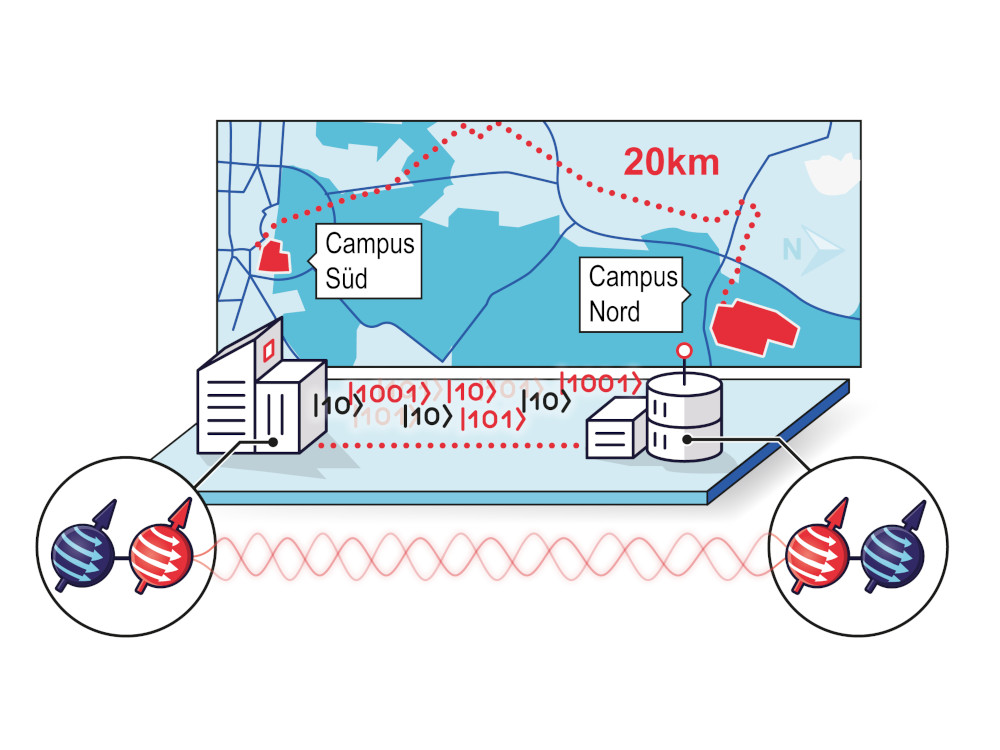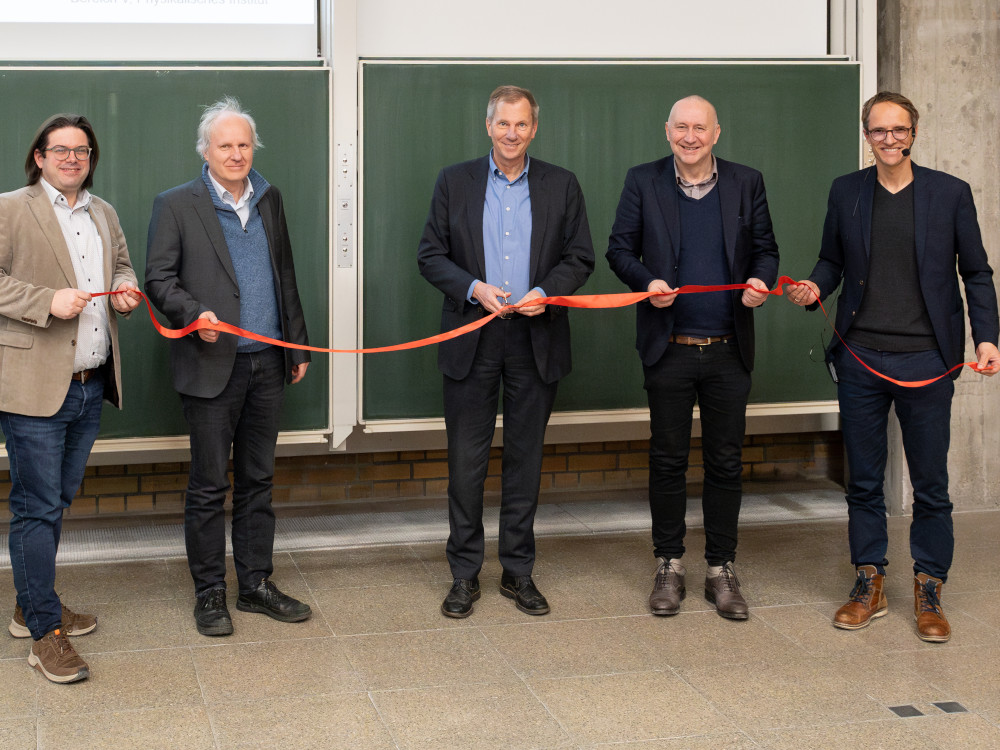
03 Feb New test track for quantum communication
A new fiber optic test track for quantum research has been inaugurated at the Karlsruhe Institute of Technology (KIT). The test track is equipped with state-of-the-art technologies such as highly coherent lasers in order to gain new insights into quantum optical data transmission. With a length of 20 kilometers, the transmission link connects specially equipped laboratories with sophisticated lasers and cryostats at KIT’s South Campus and North Campus, according to the researchers. The light-conducting core of the fibre optic cable has a diameter of around 9 micrometers.

Opening of the fiber optic test track at KIT: (from left) Prof. Sebastian Randel (KIT), Prof. Marc Weber (Head of Division B V, KIT), Prof. Oliver Kraft (Vice President Research, KIT), Prof. Mario Ruben (KIT) and Prof. David Hunger (KIT). Image: Daryoush Djavadi
The path to practical quantum encryption
Project leader Professor David Hunger from the Institute of Physics at KIT says: “With the fiber optic test track, we now have a platform to further develop quantum key distribution, carry out fundamental characterizations and integrate it into conventional communication.” Building on this, the scientists are developing new transmission protocols for the keys. “We want to use new methods to make quantum cryptography more efficient and practicable,” explains Hunger. “Here, for example, we are working with KEEQuant, a start-up company in the field of quantum-safe communication. With the help of special materials, we want to generate high-purity quantum light – i.e. individual light particles – and thus increase transmission rates.”
Caching quantum information
According to the researchers, they are also building a quantum network in several stages in order to research the future quantum internet. They want to focus on two key steps: Firstly, the storage of quantum information in special quantum memories and secondly, the quantum mechanical entanglement of the memories. This makes it possible to realize quantum repeaters that can transmit quantum information over long distances. As entanglement is a basic element of quantum computers, they can be connected to each other in a quantum internet by optical transmission of the entanglement.
Materials research for future technologies
The project is a central infrastructure of the Cluster of Excellence initiative ‘Chem4Quant’ in which researchers from KIT, the University of Ulm and the University of Stuttgart are specifically developing material structures for future quantum technologies and specializing in a new sub-area of quantum technologies, molecular quantum systems. In addition, the project is an important component for research on quantum repeaters within the joint project Quantumrepeater.Net (QR.N) of the Federal Ministry of Education and Research and a contribution to the QuantumBW innovation campus.
Source: www.kit.edu
Image: Dr Johannes Richers and Studio






